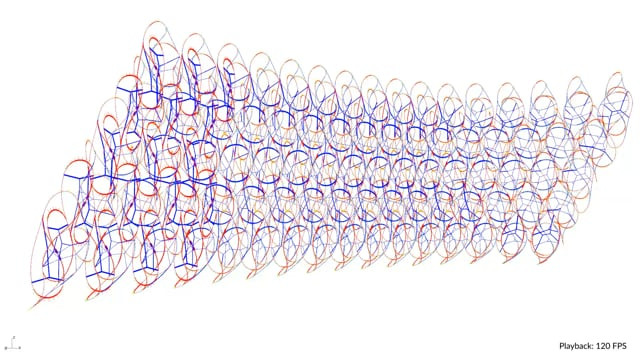
Lace Wall
Generative Cable Networks For Active Bending Structures
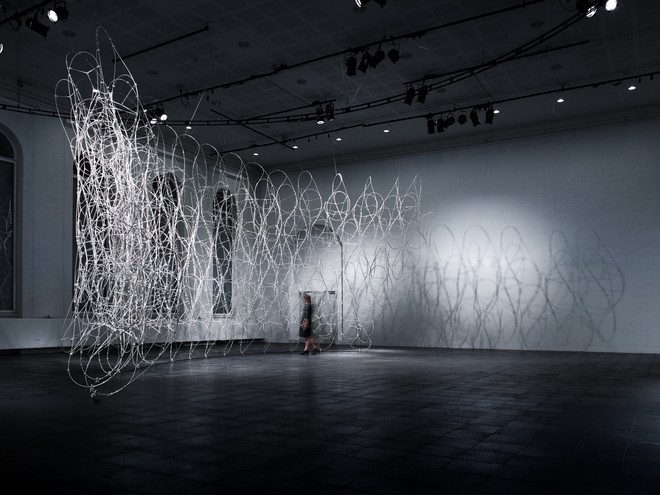
Lace Wall explores hybrid structures that combine elements in tension and compression. Here two elements of low stiffness – the fibreglass beam and the cable network – are combined to create one whole of high stiffness. The element is form active shaped by the interdependency between the elements that restrain each other.
Team: Martin Tamke, Mette Ramsgaard Thomsen, Anders Holder Deleuran, Yuliya Baranovskaya, Ida Friis Tining, Mateusz Zwierzycki
Background
Lace Wall is part of a larger investigation into the design and fabrication of form-active hybrid structures also including Hybrid Tower. The opportunity of these structures is that they enable the making of light structures of very low material intensity making them cheaper and of much lesser environmental impact.
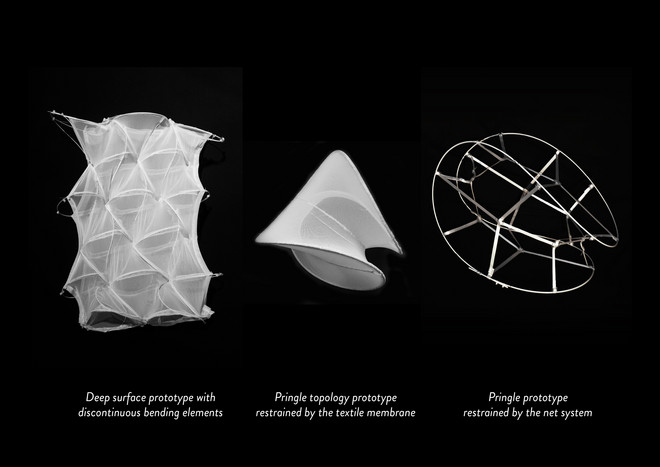
Modelling method
The design methods investigated in Lace Wall incorporates a series of steps moving from design to analysis and finally production. The first step allows the definition of cell topology in which beams are connected with cables in different configurations. This can be done interactively by the designer or through search algorithms by which optimised solutions can be found. In Lace Wall this process of digital prototyping was supported by extensive physical prototyping in which interdependencies were explored and topologies examined.
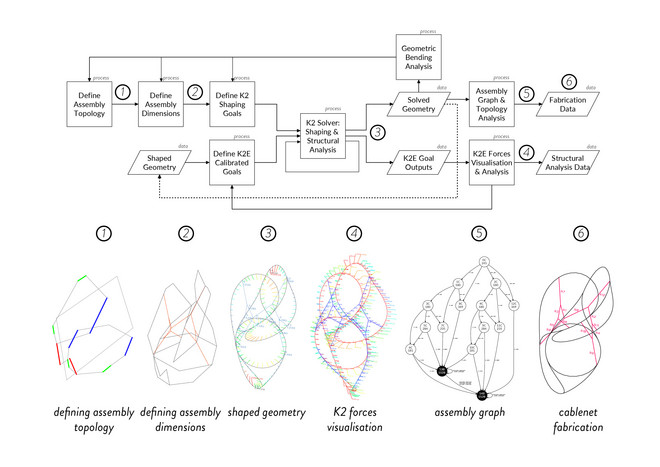
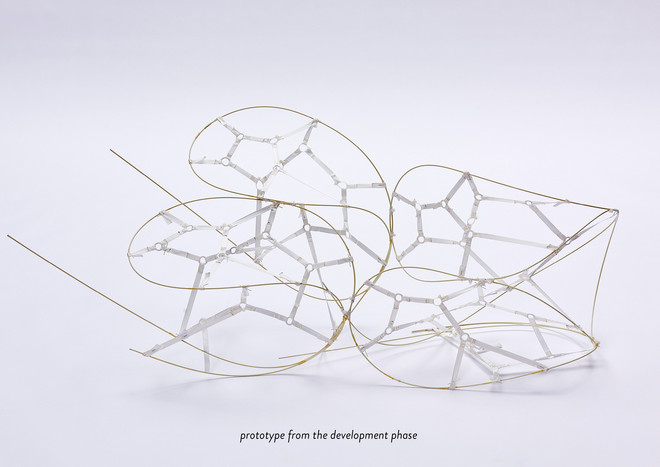
Generative design space search
The definition of cell topology is enabled by the discretisation of the primitive geometry through projective based dynamic relaxation. Here, goals are assigned to the discretised geometry, which allows us to accurately represent real world mechanical behaviour. The sub models are testing if the cable network is active and well defined, if the angles of cables are perpendicular to the beams and if the unit as a whole can tile well with adjacent cells.
This information is then fed back to the start of the design model enabling a circular and iterative design chain by which to optimise the cable network topologies. In Lace Wall we use generative machine learning algorithms to further search the design space and optimise the cable networks.
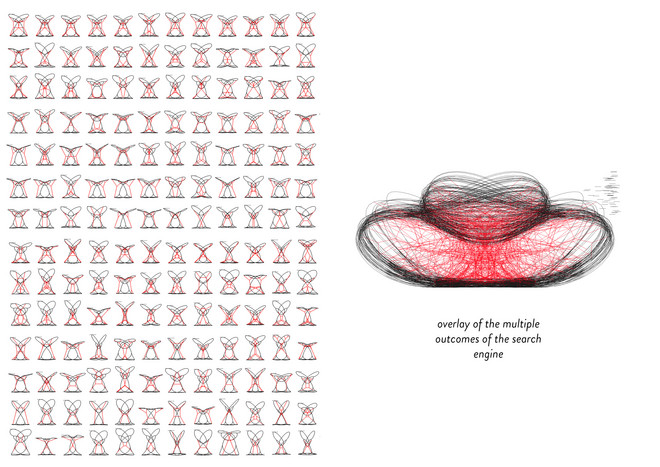
Fabrication
The final process in the pipeline prepares for fabrication. Because of the inherent complexity of the cells, we use graph representation as a means of mapping the relationships between the individual beams and the cables. The graph is a symbolic representation of interconnections that describe the topological interdependencies and also a data structure that captures and annotates all lengths and dimensions. These are used to generate the fabrication data and, importantly, the assembly order of the structure.
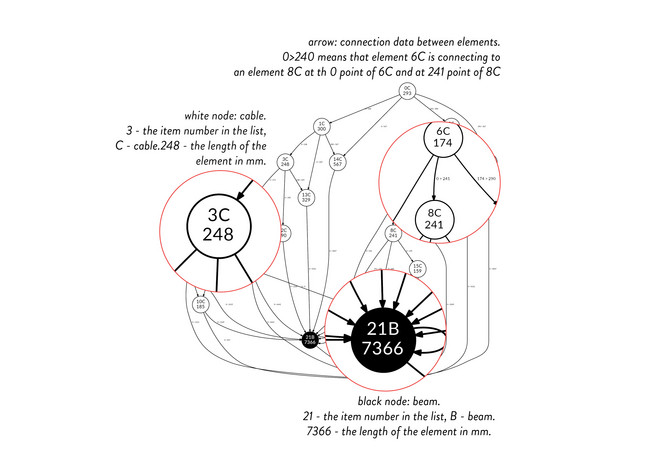
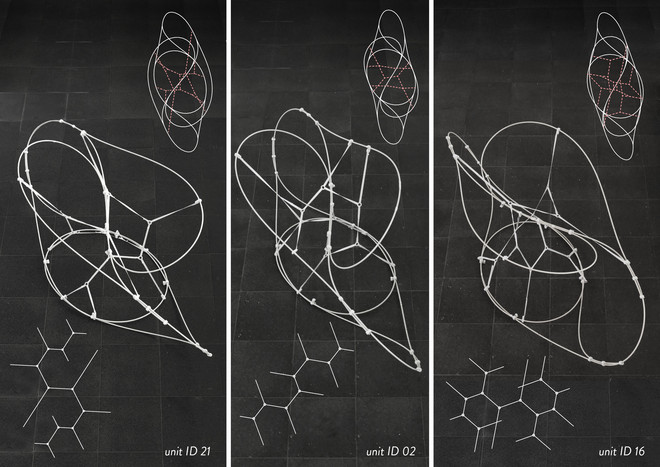
Connectors
In order to accomodate all the connectivity type conditions the set of custom connectors was developed. It could be divided into three groups: beam-to-beam connection, cable-to- beam connection, cable-to-cable connection. All details were prototyped in HDPE (Hight Density PolyEthylene) due to the appropriate viscosity that material has under the tension load or the active bending material. Instead of a sudden breaking as do brittle materials, HDPE allows small local deformations and very strong.
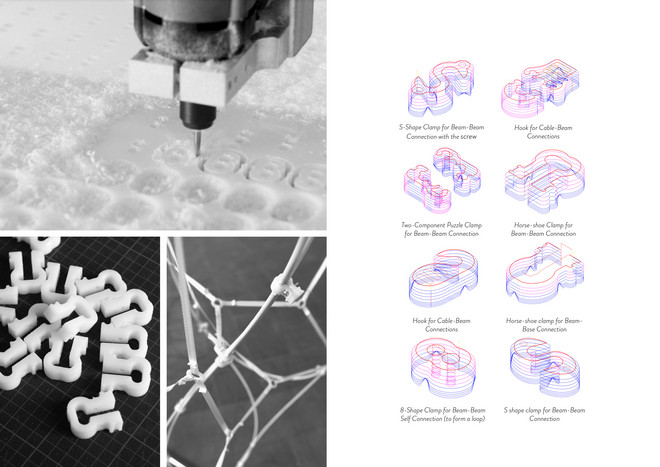
Textile logic for cell typologies
The inherent textile logic of Lace Wall lies with the arrangement of cells into structured arrays. Lace Wall includes methods for simulating the assemblies and analyse the structural interaction between cells and their aggregate behaviour. This allows us to understand and control how different cell topologies with different tiling dimensions can be manipulated to form the overall macro shape.
Results
Lace Wall proposes how future architecture can work with materials in a highly optimised manner create super light structures. As our social and environmental contexts are changing, it is paramount that we develop new building practices for a less intensive material culture. Where Lace Wall is speculative and of course removed from the requirements of architecture its importance lies with the invention of a new structural system. The second contribution lies with the creation of the modelling environment. The foundation for a new material culture lies with the invention of means by which new structural systems can be represented thus allowing for their design, analysis and communication. Where Lace Wall on the one hand is a particular solution for a very singular system, it is also a prototype for a networked and active modelling space.
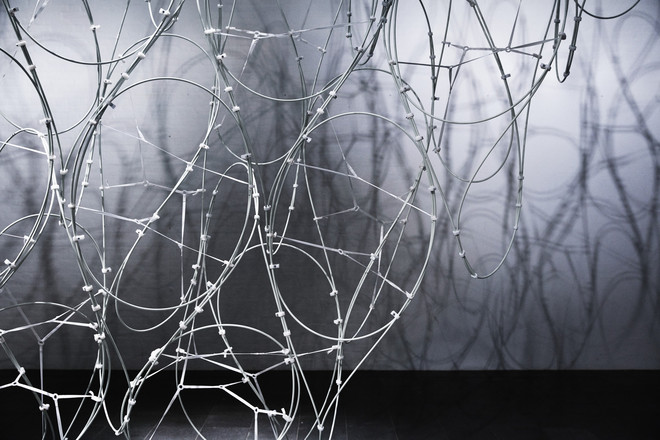
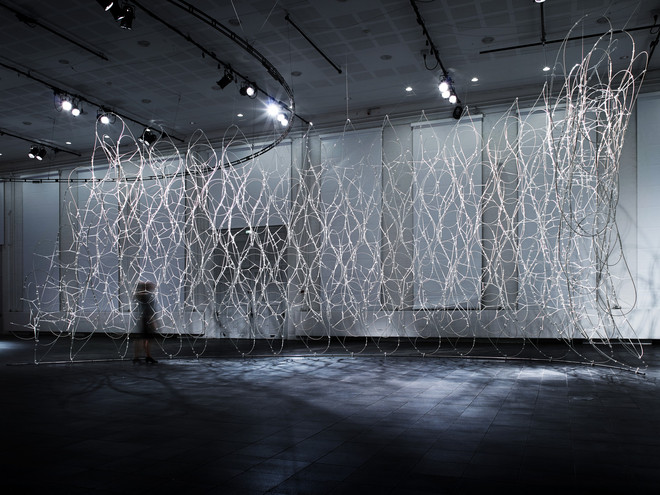
Acknowledgements:
Danica Pistekova and CITA Studio students, who helped along during the development and the fabrication phases.
Related Publications
Deleuran, A.H., Pauly, M., Tamke, M., Friis Tinning, I., Ramsgaard Thomsen, M. (2016) Exploratory Topology Modelling of Form-Active Hybrid Structures. In proceedings of the International Symposium on “Novel Structural Skins: Improving sustainability and efficiency through new structural textile materials and designs. Newcastle, Great Britain.
Quinn, G., Deleuran, A.H., Piker, D., Brandt-Olsen, C., Tamke, M., Ramsgaard Thomsen, M., Gengnagel, C. (2016) Calibrated and Interactive Modelling of Form-Active Hybrid Structures. In K. Kawaguchi, M. Ohsaki, T. Takeuchi (eds.) Proceedings of the IASS Annual Symposium 2016 “Spatial Structures in the 21st Century”, 26–30 September, 2016, Tokyo, Japan.













